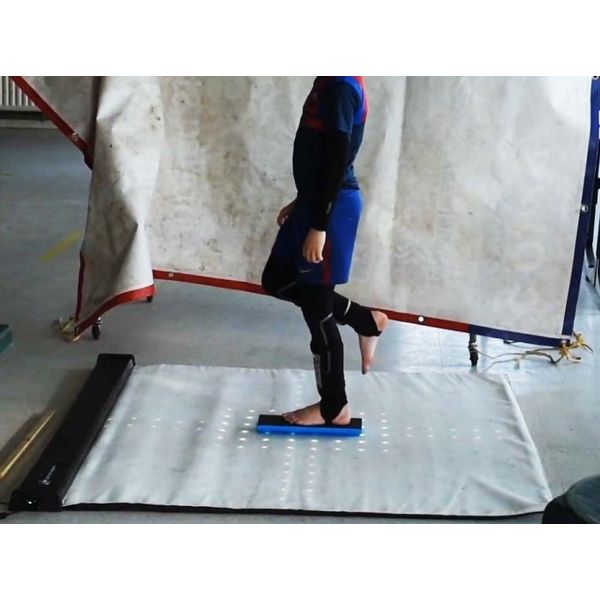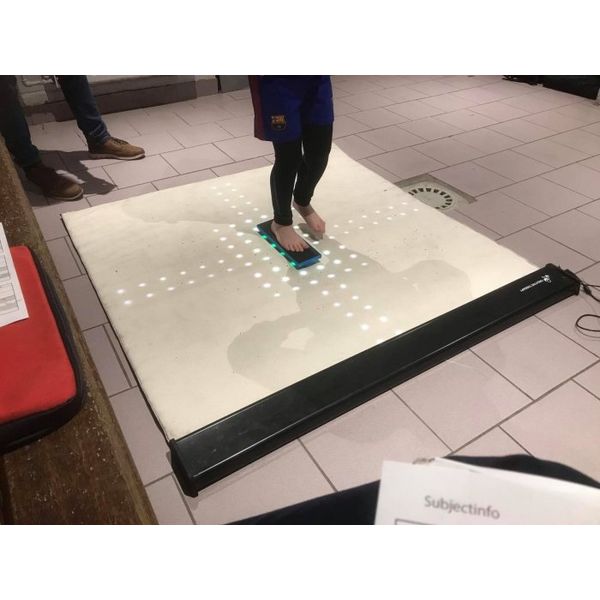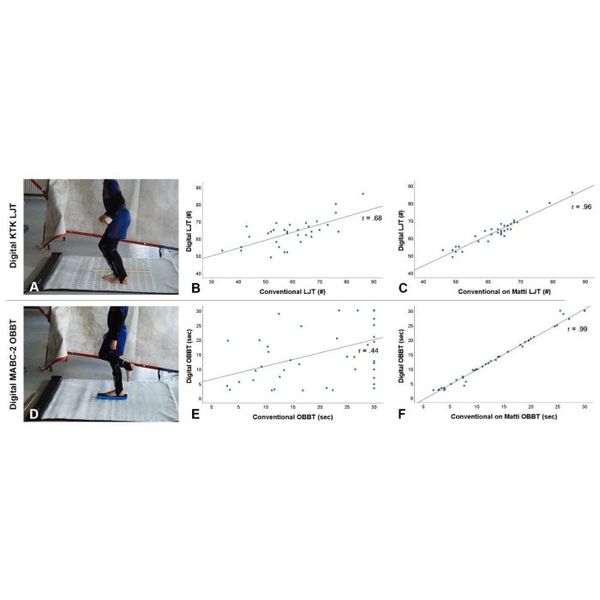

- Home
- Companies
- Creative Therapy
- Articles
- Matti as a valid measurement tool of ...
Matti as a valid measurement tool of various motor tasks
Last year, Ghent University conducted a pilot study on the concurrent validity of some standardized subtests and their digital equivalent on Matti. Extremely high correlation coefficients (r=.96; r=.99) were found when we compared the digital results with the simultaneously scored results by an external observer. The comparison of the digital results with the standardised test administration yielded less high correlations (r=.68; r=.44) but certainly gives perspective for future research.


About one year ago (13 July 2020) Creative Therapy, together with Ghent University (UGent), obtained a Baekeland mandate through the Flemish Agency for Innovation and Enterprise (VLAIO). This support allows us to conduct extensive scientific research in the coming years into the measurement possibilities of Matti in practice. In the framework of this ongoing research project - and despite the hurdles the COVID pandemic brought - UGent already carried out a first pilot study this year. The aim of this pilot study was to investigate whether specific subtests of the Movement Assessment Battery for Children - Second Edition (MABC-2) [1] and the Körperkoordinationstest für Kinder (KTK) [2] can be implemented on Matti, and if so, whether these digital versions produce valid results.
The correct administration of motor tests requires a lot of concentration from therapists. In addition to the quantitative aspects of test administration (e.g. checking time, counting performances, etc.), therapists must also take into account the qualitative performances of the patient. In order to simplify this process, digital applications can offer a possible solution. The aim of this study was to evaluate to what extent Matti can support the administration of two specific tests, namely the unipodal stance on a balance beam (USE - subtest MABC-2) and the lateral jump test (ZS -subtest KTK) [1, 2].
This research was conducted in cooperation with several Master students of Ghent University and 5 different sports clubs in West and East Flanders. The 46 participating participants were all normally developing and sporty children between 7 and 11 years old. Each participant performed the USE and ZS via a standardized test and a digital test on Matti. The order of these two methods was randomly determined at the beginning of each study. An additional observer was always present during the digital administration and scored the test in the manner prescribed in the manual.

In order to investigate whether the digital test taking was competitively valid with the standard test taking, two groups of results were compared. These were the measured values by Matti and the simultaneously recorded results by an external observer.
- Voor de ZS waren de digitale resultaten (63±8 sprongen) zeer goed gecorreleerd (r=.96; p<.0001) met de geobserveerde resultaten (62±9 sprongen), al bleken deze ook significant hoger te liggen (p=.008). Er werden reeds enkele kleine aanpassingen uitgevoerd aan de software om dit verschil op te vangen. Bovendien kan een eventuele correctiefactor (ongeveer 3 procent) kan hier nog verbetering brengen.
- Voor de USE werden excellente correlaties (r=.99; p<.0001) gevonden tussen de digitale (16±10 sec) en geobserveerde resultaten (16±10sec), die daarbovenop geen significant verschil van elkaar toonden (p =.513).
The results of the standardised version were then also compared with the results on Matti. The rather low correlations(r=.68 for ZS and only r=.44 for USE) between the two conditions (Fig B, E) do show that further research is still necessary to bring the digital implementation closer to the conventional method.
We can therefore conclude that Matti, and the accompanying software on the Creative Therapy platform, can serve as a valid measuring instrument of certain motor tasks (unipodal stance, bipodal jumps, etc.). The reliability and possible standardisation based on age categories are aspects that we will investigate and develop further in the near future.
- Smits-Engelsman B. HSE, Sugden D.A. Movement ABC-2 | Movement Assessment Battery for Children - 2 Second Edition: Pearson; 2007.
- Kiphard EJ SF. Körperkoordinationstest für Kinder. Weinheim; 1974.
